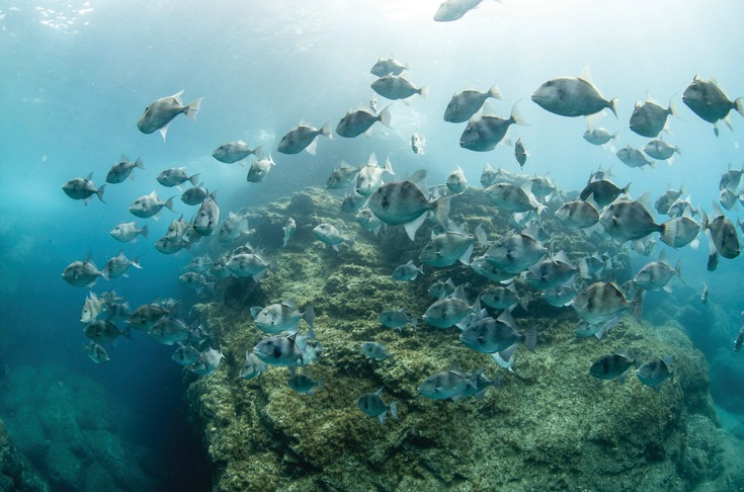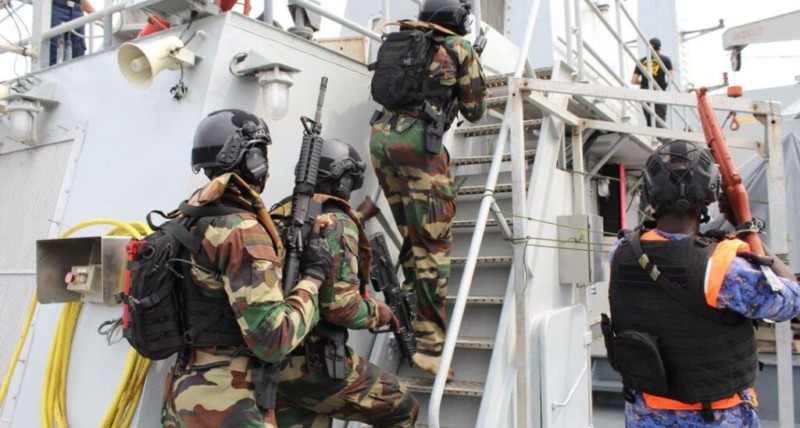The decision to protect an area in the Atlantic comes in advance of major biodiversity summit that will assess progress on global goal to protect 30% of the planet by 2030
Washington, DC (18 October 2024) —The Azores, a chain of nine islands in the Atlantic ocean that is part of Portugal, approved legislation to establish 287,000 square kilometers of marine protected areas — the largest MPA network in the North Atlantic. Fifteen percent of Azorean waters are now designated as fully protected and 15% as highly protected, which means that fishing and other extractive activities will either be restricted or banned in the area.
A science-based and highly participatory process shepherded by the regional government led to the creation of the network, the Azores Marine Protected Area Network (RAMPA). The area will safeguard deep-sea corals, whales, dolphins, sharks, manta rays, fish, and unique hydrothermal vent ecosystems.
“This is an achievement for the Azoreans, with the Region leading by example at national, European and international levels in the protection and management of a vital part of our planet: the sea. We hope our decision inspires other regions, who must act to ensure the future health of the planet.” said José Manuel Bolieiro, President of the Regional Government of the Azores.
The announcement comes as the world prepares for the UN Biodiversity Conference (CBD COP16). At the last summit, in 2022, the world agreed to protect 30% of land and ocean by 2030. Right now, only 8% of the ocean is protected in some way and less than 3% is fully or highly protected.
“As negotiators gather in Cali, Colombia, to assess the state of nature protection, the case of the Azores provides a model of ocean protection for the world to follow,” said Enric Sala, the founder of National Geographic Pristine Seas, who took part in the scientific exploration of the area now under protection. “What is so remarkable about the new protected area network is not only its massive size, but also the fact that so many local groups worked together to make it happen. Government officials, scientists, industry representatives and local citizens banded together to devise a system of protection that works for everyone. »
“With new research revealing that we need about 190,000 small MPAs in coastal regions and 300 large MPAs in remote, offshore areas by the end of 2030 to achieve the 30×30 goal, it is encouraging to see the Azores move the world in the right direction. Now, it’s time for other regions worldwide to follow their lead. However, it’s important that we don’t protect just any 30% but the right 30% to achieve the greatest biodiversity, climate and food supply benefits MPAs can offer,” continued Sala.
In 2018, in partnership with the regional government, local scientists, the Waitt Institute, Oceano Azul Foundation and other partners, Pristine Seas participated in scientific expeditions in the Azores to help identify priority areas for protection. Using high-tech tools like underwater cameras to assess coastal, open sea and deep sea areas, the expeditions added new information about their biodiversity—as well as the impact of human activity.
“We witnessed that the marine ecosystems of the Azores are one of the most diverse and dynamic in the North Atlantic,” said Alan Friedlander, the chief scientist of Pristine Seas, who was part of the expedition of the Azores. “The unique geographical location of the archipelago, combined with its complex underwater topography, includes seamounts, hydrothermal vents, and deep-sea habitats that support unique and diverse biological communities of high conservation value.”
“The health and sustainability of the Azores’ marine environment are crucial not only for local communities but also for global marine biodiversity, climate stability, and oceanic health. Protecting this ecosystem is essential for preserving its ecological, economic, and cultural values,” added Friedlander.
Pristine Seas conducts research at the request of governments who are looking to fulfill their commitments to ocean protection. The team of international and local scientists and filmmakers study the health of the ocean, create documentaries, and share their personal connections to the ocean. Establishment of this new MPA network in the Azores marks the 29th protected area in which Pristine Seas’ science has played a role.
Source: news nationalgeographic




